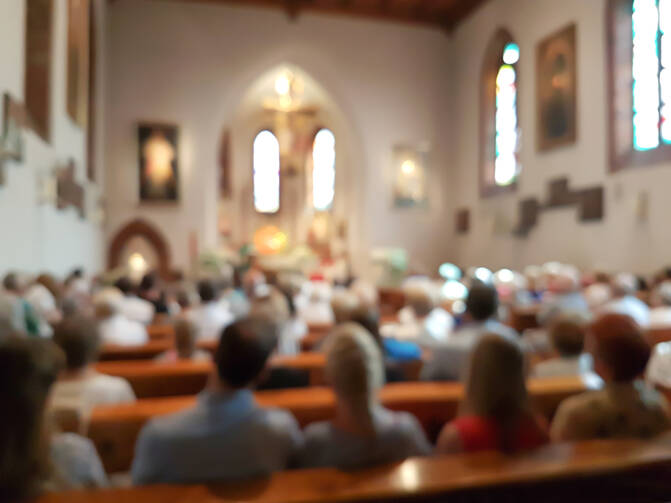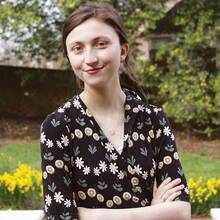Do you have to believe in God to go to church? I used to think so.
Americans are less likely than ever to attend religious services. According to one recent Gallup poll, just 30 percent of U.S. adults attend religious services weekly or nearly weekly—down from 42 percent in the early 2000s.
This rapid secularization has resulted in serious consequences for American community-building. As it turns out, when Americans left their churches, synagogues and mosques, they didn’t replace time spent in religious observance by joining a secular community organization. Instead, we’re spending more time alone than ever.
Young people in particular seem to be driving this trend. Thirty-four percent of Generation Z (born between the mid-1990s and early 2010s) are religious “nones,” the most of any generational cohort.
“Young people, who are fleeing religion faster than older Americans, have also seen the largest decline in socializing,” Derek Thompson recently wrote in The Atlantic. “There is no statistical record of any period in U.S. history where young people were less likely to attend religious services, and also no period when young people have spent more time on their own.”
For a long time, this described me.
While I grew up regularly attending religious services—ranging from my grandparents’ Southern Baptist church to the progressive home church my parents attended to the occasional Catholic Mass with my mother—I stopped attending by the time I was in high school.
I simply lost—or rather, never developed—the strong spiritual faith I thought was necessary to participate in a religious community. For much of my young adulthood, I was a strident atheist.
I appreciated the Christian ethical values I was raised with, but I couldn’t believe that any God, let alone an omnipotent, all-loving one, was real. I wanted to have faith, but I simply couldn’t find it. While I could entertain agnosticism, a full-blown spiritual certainty seemed impossible, and so did the idea that I belonged in a Christian community.
Over my senior year of college, that began to change. Not surprisingly for an English major, it started with a class on medieval mysticism that exposed me to works by Augustine and Aquinas and—my favorite—Julian of Norwich’s stirring, beautiful Revelations of Divine Love. It ended with an internet pile-on.
In the spring of my senior year at the University of Virginia, I published a controversial guest essay in The New York Times about college students’ experiences of self-censorship in the classroom. The piece went viral, and in the course of a few short hours, my life was turned upside down. I went from an unknown college student to the subject of a multi-day Twitter meltdown. At one point my first name was trending, and I had racked up condemnations from a bevy of well-known journalists.
While I had the support of loving family and friends—not to mention plenty of spirited online defenders—for even the most well-supported person, an experience like that is bound to be destabilizing. As the days wore on, I found myself spending more time than I’d care to admit alone in my tiny dorm room, scrolling on my phone and reading cruel, personal comments I knew I should ignore.
I could feel myself being sucked into self-obsessed despair, and I wanted out. Impulsively, I tried praying, using the simple, conversational style I had learned in my childhood churchgoing.
Forcing myself to pray—especially for the people saying the most uncharitable things about me—turned out to be extraordinarily grounding. At a moment of psychological vulnerability, it provided a crucial internal peace. Despite a relatively brief low, I managed to escape my time as the internet’s “main character” relatively unscathed. What’s more, the experience helped me realize that I no longer cared whether God was real or not. That question had ceased to be interesting. It’s a little embarrassing to admit that being lambasted on the internet helped me find religion, but, well, stranger things have happened.
When I moved to Washington, D.C., after graduation, I started attending an Anglo-Catholic parish. I was first drawn to it out of a desire for ritual—especially the traditions and “smells and bells” of Anglo-Catholicism. But I was hooked by a totally unexpected reason: the community.
Within hours of my first Sunday Mass, I was added to two different group chats, had agreed to attend an upcoming happy hour and had swapped numbers with a young woman who would soon become one of my best friends. It was almost an instant gang of friends—one formed around shared values (and a shared interest in Gregorian chants).
At a time when Americans—especially young Americans—are more atomized than ever, having not just individual friends but a real community is increasingly difficult. As the Gen-Z writer Rona Wang humorously put it, “[S]ocial life after college is just texting people to ‘get coffee’ a few times a month & then spending $600 to attend someone’s wedding.”
This kind of individual social interaction can be worthwhile, but it can’t replicate the interconnectedness provided by formalized community groups. If there are dozens of parishioners counting on seeing you on Sunday, it’s harder to fall into isolation during a rough patch. And it’s a lot harder to ghost your girlfriend if you know you’re guaranteed to see her again on Sunday.
Showing Up
Becoming part of a religious institution also allows members to get outside of their own age-segregated bubbles. After Mass, I can count on talking to elderly parishioners and hearing the babbles of babies and toddlers—something that would be unlikely to happen at a bar or concert.
A religious community forces you to become the kind of person who shows up. Your life gains a new rhythm, with new obligations. For example, I don’t think it’s a fluke that for weddings at my church, all members are invited to the ceremony.
And while there are plenty of secular alternatives to religious community—the classic D.C. example is joining an amateur softball or soccer league—nonreligious groups cannot provide the sense of shared moral priorities and explicit moral instruction that religious communities impart.
For me, this moral element is one of the biggest reasons I joined a church instead of a soccer club. I want to feel accountable to something other than my own conscience, and the hour and a half of weekly contemplation provided in church is difficult to replicate anywhere else.
But despite my regular church attendance for almost two years now, I still haven’t developed a rock-solid faith. I’ve joked—and said as much on Twitter—that I only believe in God about 30 percent of the time on a good day. My ambivalence does set me apart from most of my friends from church, a group that includes a few seminarians. But it doesn’t keep me from coming back.
How common is the path I’ve taken? It’s unclear, but it seems fairly rare. While a growing number of Americans identify as “spiritual but not religious,” being religious but not spiritual is far more unusual. According to one Gallup poll, just 3 percent of Americans who identify as atheists or agnostics attend church weekly or nearly weekly. However, this is probably an undercount, excluding agnostics and atheists who nonetheless identify with a religious label.
As church attendance has declined, so has our connectedness to one another. But for the increasing numbers of spiritually ambivalent Americans, there may be an unusual solution to the loss of community. As counterintuitive as it might seem, more agnostics should give religion a try.







